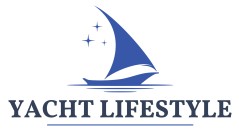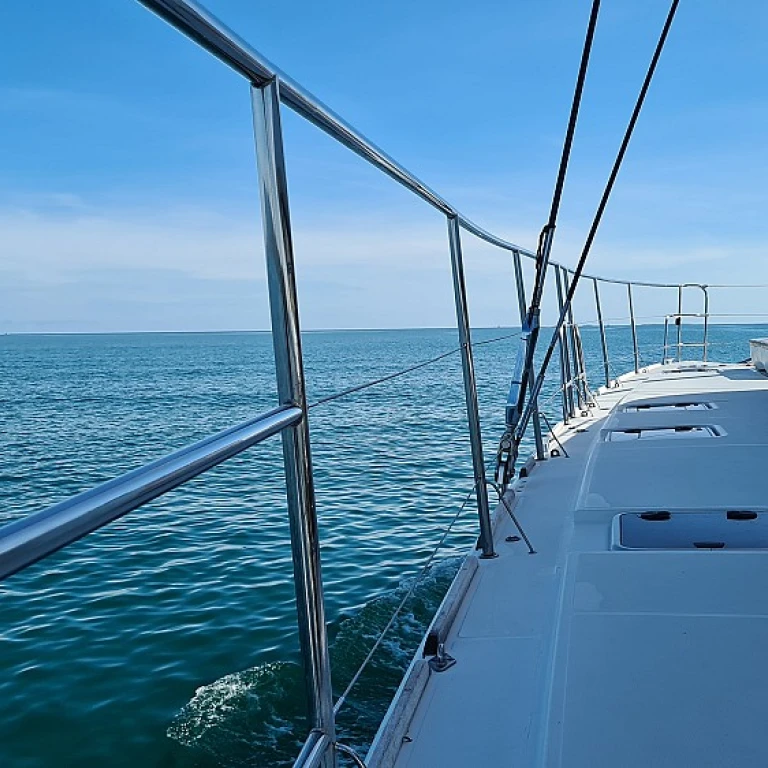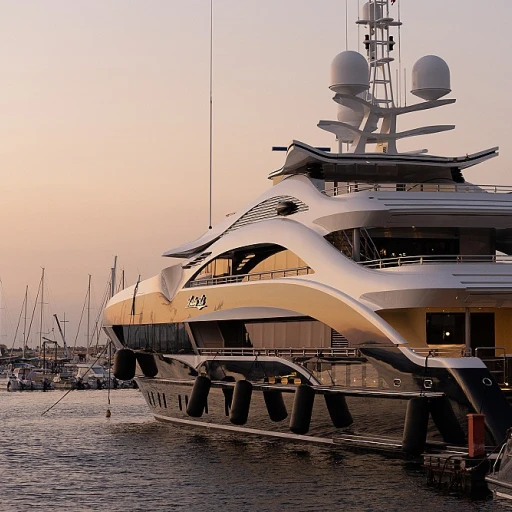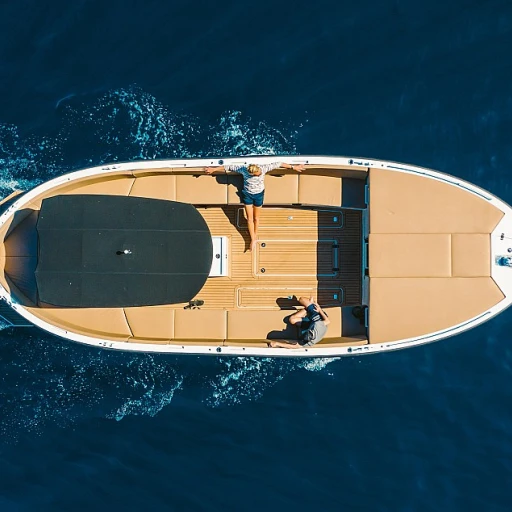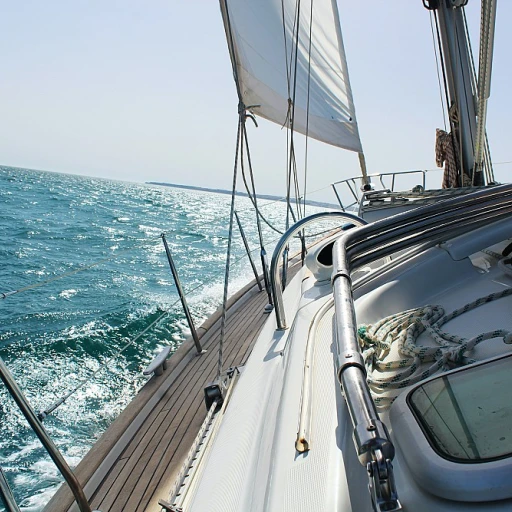
Understanding Hydraulic Steering Systems
Decoding the Mechanics of Hydraulic Steering
When it comes to precision control and seamless maneuverability on the water, hydraulic steering systems are a key component. These systems are designed to make boat handling smoother and more efficient, offering a significant upgrade over traditional steering methods. In essence, a hydraulic steering system relies on a combination of components such as a helm pump, hydraulic cylinder, and hoses to control the direction of your yacht.
At the helm, the steering wheel is connected to a helm pump, which is responsible for generating pressure within the system. As you turn the wheel, the pump moves hydraulic oil through hoses towards the hydraulic cylinder. This cylinder, mounted on the outboard or rudder, uses the oil to push or pull the steering linkages, effectively changing the direction of the boat. Cylinder hydraulic stroke width and the powerful helm pump work together to provide a responsive and controlled steering experience.
Components such as the Seastar and Uflex are renowned in the marine industry for their reliability and efficiency. They form essential parts of a hydraulically powered steering kit, ensuring precision and durability. Additionally, advancements in hydraulic technology have introduced options like front mount and built lock features, enhancing the control over outboard engines.
Understanding these systems is crucial for any yacht enthusiast aiming to optimize their vessel's performance. It's also important to select the right components, such as the appropriate hose lengths and the correct size of the hydraulic cylinder to match your yacht specifications. By doing so, you ensure the system remains effective and durable across varied marine conditions.
For further insights on ways to elevate your maritime adventures, consider exploring the potential upgrades available in the yacht experience, which can complement the enhanced steering capabilities.
Benefits of Hydraulic Steering for Boats
Advantages of Modern Hydraulic Steering Systems
Hydraulic steering systems for boats have revolutionized the way marine enthusiasts experience navigation. Transitioning from traditional mechanical systems to advanced hydraulics offers numerous benefits that can enhance your overall boating experience.- Smooth Operation: Perhaps one of the most noticeable differences is the smoothness of operation. Hydraulic steering systems utilize a hydraulic pump and cylinder, which facilitate seamless steering with reduced effort. This makes maneuvering, especially during tight turns or challenging conditions, much easier.
- Ease of Use: With a hydraulic steering kit, the helm of your boat becomes more responsive, offering the helmsman precise control over the vessel. Steering becomes less of a physical task and more of a delightful experience, even when undertaking long voyages with your marine craft.
- Less Maintenance: Comparatively, hydraulic systems like those from uflex and SeaStar require less maintenance than traditional mechanical ones. With durable steering cylinders and resilient hoses, these systems are designed to withstand rigorous marine conditions. Keep in mind, regular inspections will still be necessary to ensure everything from the helm pump to the steering cylinder hydraulic setup is in top form.
- Increased Safety: Hydraulic steering provides a higher level of safety. Unlike mechanical systems that can wear over time and become unresponsive, hydraulic steering maintains consistent performance, minimizing the risk of steering lock or failure.
- Versatility and Customization: These systems are available for a variety of boat types, including outboard boats and larger ships. From front mount options for outboard engines to integrated tie bars, customization allows the system to meet specific needs efficiently.
Comparing Hydraulic and Mechanical Steering
Contrasting Dynamics: Mechanical vs. Hydraulic
In evaluating steering systems, it’s crucial to understand the dynamics between hydraulic systems and their mechanical counterparts. Mechanical steering, commonly found in smaller boats, utilizes cables that connect the steering wheel to the outboard engines. This system provides a direct but limited-feedback experience.
On the other hand, hydraulic steering systems have revolutionized marine steering through the use of a helm pump, a hydraulic cylinder, and associated components like hoses and hydraulic oil. This setup allows for smoother, more responsive control, ideal for larger vessels where power steering becomes necessary.
The primary distinction lies in the ease of handling. Hydraulic systems excel by reducing the effort required from the operator, allowing the steering wheel to rotate with significantly less resistance. The inclusion of features like a front mount hydraulic cylinder further optimizes the ease of steering, especially in altering conditions at sea.
Moreover, while mechanical systems are renowned for their simplicity and cost-effectiveness, they often fall short in providing the marine-grade durability found in advanced hydraulic kits. These systems are designed to withstand harsher conditions without losing precision or control, offering a distinct advantage for any yacht enthusiast seeking enhanced navigational performance.
Installation and Maintenance Tips
Installation and Maintenance Guidelines for Hydraulic Steering Systems
To maximize the performance and lifespan of your hydraulic steering system, proper installation and diligent maintenance are crucial. Whether you're outfitting a new vessel or upgrading your current boat's steering, each step requires precision and an understanding of hydraulic principles. Start by selecting a compatible steering kit that suits your specific boat model and size. Manufacturers like Uflex and Dometic SeaStar provide comprehensive kits, which usually include the helm pump, hydraulic cylinder, hoses, and the necessary fittings. Pay attention to the helm pump's compatibility with your outboard engines and ensure that the stroke width aligns with your steering requirements. For a successful installation, you'll want to:- Position the Helm Pump: Install the helm pump with care, ensuring it's mounted securely at a comfortable angle for steering wheel access. Double-check the alignment with the cylinder hydraulic setup to prevent any steering hesitations.
- Connect Hydraulic Hoses: Measure and cut the hydraulic hose to the appropriate length, allowing some slack for movement. Securely fasten the hoses to both the helm pump and the cylinder, keeping in mind that the lines should be free from kinks and potential hot spots.
- Fill the System with Hydraulic Oil: It's imperative to use the recommended hydraulic oil to prevent coagulation or breakdown under marine conditions. Proper bleeding of air is crucial to ensure smooth operation, so follow the manufacturer’s guidelines for the fill and bleed process.
- Inspect for Leaks: Regularly check for signs of hydraulic oil leakage around connections and fittings. Immediate attention to leaks can prevent significant damage and assure reliable steering.
- Monitor System Pressure and Power: Periodically test for any loss in steering power or sluggishness, which could indicate the need for hydraulic pump or cylinder repairs.
- Grease and Lubricate: Follow the maintenance schedule for greasing components such as tie bars. This prevents rust and deterioration, particularly in areas exposed to saltwater.
Innovations in Hydraulic Steering Technology
Innovative Advancements: Steering Solutions Redefined
The evolution of hydraulic steering systems is continuous, with new technologies emerging to enhance marine experience. These innovations are designed to improve efficiency, enhance precision, and bolster reliability for various yacht sizes and types.
One of the remarkable advancements is in the realm of hydraulic pumps and helm pumps. Modern hydraulic systems, like those from brands such as Seastar and Uflex, feature helm pumps that minimize steering effort, making handling more intuitive and responsive. This reduces the physical strain on the captain, especially during long voyages or in difficult weather conditions.
With a focus on improving power and performance, manufacturers have developed high-efficiency systems that integrate seamlessly with outboard hydraulic setups. These system hydraulic pumps are crafted to offer a smooth, almost effortless rotation of the steering wheel, ensuring precise maneuverability with every degree of stroke width exerted. This feature is crucial when navigating through tight spaces or docking.
Hydraulic cylinder enhancements also play a critical role. The latest outboard hydraulic cylinders are built with advanced materials that resist corrosion, a common challenge in marine environments. Improved designs allow for a longer lifespan and reduced maintenance, making them a desirable option for fleet operators and recreational boaters alike.
Moreover, hydraulic steering systems have been integrated with smart technology. These systems allow boat owners to monitor steering performance and perform self-diagnosis. Integrated tie bars and the electrical lock-to-lock functionalities help in achieving precision control, which is essential in more aggressive maneuvers and during emergency situations.
As hydraulic oil circulation remains a focal point, innovations ensure that the hydraulic fluid is used efficiently, reducing the need for frequent fills and minimizing leakage risks. This not only enhances the environmental footprint of a marine system but also results in a more cost-effective maintenance schedule.
Ultimately, these innovations ensure that yacht owners have access to the most cutting-edge technology available, providing an unmatched blend of comfort, security, and sheer enjoyment in their nautical passions.
Choosing the Right Hydraulic Steering System for Your Yacht
Selecting the Optimal Hydraulic Steering Kit for Your Marine Adventure
When it comes to enhancing your marine experience, choosing the right hydraulic steering system is crucial. The decision involves several considerations to ensure compatibility and performance align with your yacht's unique needs. Here’s a concise guide to help you make an informed choice:- Assess Your Vessel's Requirements: Evaluate the size, type, and weight of your boat. The hydraulic cylinder and pump must suit the helm specifications for seamless steering.
- Consider Steering Applications: Whether it's console steering or outboard steering, select a system that matches your control preferences. For example, a front mount cylinder hydraulic system might be more suitable for certain outboard engines.
- Determine Power Needs: Hydraulic steering kits like those from Dometic Seastar or Uflex are built to handle different power levels. Consider the stroke, hose length, and pump capacity to ensure the system can handle the power of your outboard engine.
- Factor in Performance Features: Look for hydraulic steering kits with additional features like no feedback capability, which locks the wheel in place when not engaged. This built lock functionality is particularly useful in reducing driver fatigue over long journeys.
- Installation and Compatibility: Ensure the hydraulic steering system is compatible with existing marine components. Several systems come as comprehensive kits including helm pumps, tie bars, and steering wheels for straightforward installation.
- Analyze Innovation and Brand Reputation: Innovations in hydraulic technology are continuously emerging. Prioritize systems from reputable brands like Seastar or Uflex, known for quality. Also, consider systems that offer enhanced stroke width control for more precise steering.
